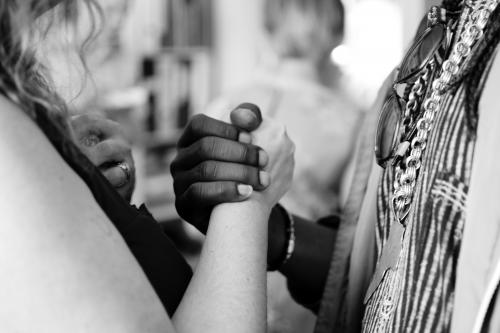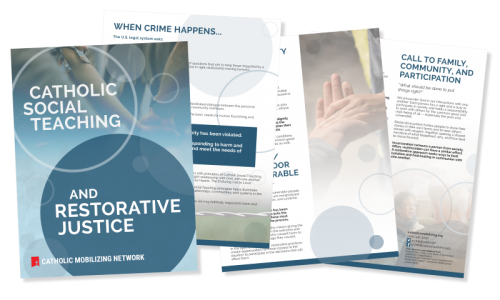Catholic Social Teaching & Restorative Justice
Written by Susan Sharpe, Ph.D. and adapted for Catholic Mobilizing Network
 Rooted in both scripture and the rich tradition of our faith, Catholic Social Teaching is a guide for how to live as a people of justice and mercy. Catholic Social Teaching brings the teachings of Jesus and his call to discipleship to the larger societal conversation of social justice.
Rooted in both scripture and the rich tradition of our faith, Catholic Social Teaching is a guide for how to live as a people of justice and mercy. Catholic Social Teaching brings the teachings of Jesus and his call to discipleship to the larger societal conversation of social justice.
Catholic Social Teaching has 7 major themes: Dignity of the Human Person; Call to Family, Community, and Participation; Rights and Responsibilities; Preferential Option for and with People who are Poor; Dignity of Work and the Rights of Workers; Solidarity; Care for God's Creation. (1)
All of these principles are evident in restorative justice, “an approach to achieving justice that involves, to the extent possible, those who have a stake in a specific offense or harm to collectively identify and address harms, needs, and obligations in order to heal and put things as right as possible.”(2)
In addition to repairing the harm done by wrongful behavior, restorative justice also fosters skills and attitudes that make injustice less likely to occur and easier to repair when it does.


 "What are their needs?"
"What are their needs?" Overall, restorative justice responds to harm in a spirit of solidarity—that is, by “seeing others not as rivals or statistics, but brothers and sisters."(4) Restorative justice sees people not as victims or offenders needing pity or punishment, but rather as people whose lives have intersected through harmful behavior and who need that harm healed and integrated.
Overall, restorative justice responds to harm in a spirit of solidarity—that is, by “seeing others not as rivals or statistics, but brothers and sisters."(4) Restorative justice sees people not as victims or offenders needing pity or punishment, but rather as people whose lives have intersected through harmful behavior and who need that harm healed and integrated.
